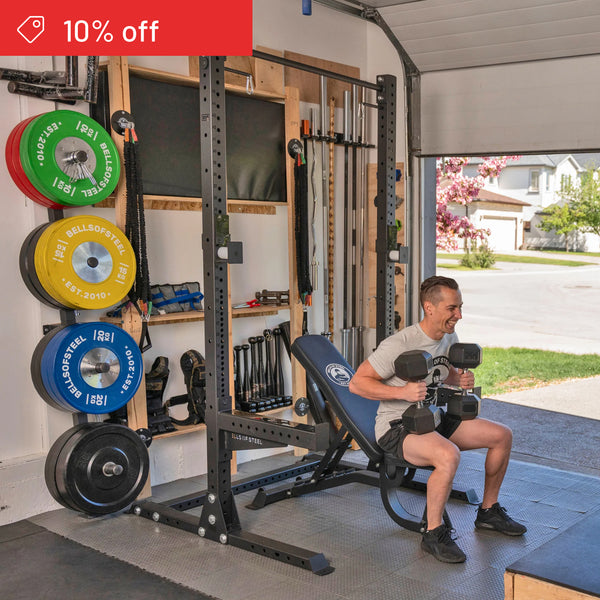So, you’ve finally taken the plunge and invested in a lever belt. Good choice!
Whether you’re hitting those heavy squats or deadlifts, a lever belt is your trusty sidekick, providing the extra support you need to push through.
But here's the million-dollar question: how tight should your lever belt be?
Finding the Perfect Fit
Let’s cut to the chase: a lever belt should be snug but not suffocating. Think Goldilocks—just right. You want enough tightness to support your core without feeling like you're about to pop.
Here's the deal: when you take a deep breath, your belt should allow for some expansion, but it shouldn't move around. If it's too loose, it won't offer the support you need; if it's too tight, you'll be more focused on gasping for air than lifting.
The Rule of Thumb
A good rule of thumb is to be able to slide your hand between your body and the belt with a bit of resistance. If you can’t get your hand in there at all, it’s too tight. If it slides in with no resistance, it’s too loose.
Simple, right? This ensures you get the support you need without cutting off circulation or feeling like a sausage about to burst its casing.
The Breath Test
Another handy trick is the breath test. Buckle up your belt and take a deep breath in. You should feel the belt tighten and restrict a bit, but you should still be able to take a full breath.
If you’re struggling to fill your lungs, loosen up a notch. You don’t want to compromise your breathing technique, which is crucial for proper lifting.
The Comfort Factor
Remember, comfort is key. The belt should be snug, but it shouldn’t leave you wincing in pain. After all, lifting is hard enough without having your belt add to the discomfort.
If you’re new to using a lever belt, finding that sweet spot might take a few sessions. Be patient and tweak the fit as you go along.
Pro Tips for Lever Belt Users
- Positioning Matters: Ensure the belt sits just above your hip bones. Too high or too low, and you’re missing out on optimal support.
- Consistency is Key: Once you find the perfect fit, stick with it. Mark the spot on your belt to save time adjusting before every lift.
- Warm Up Without It: Only wear your belt for heavy sets. Warming up without it helps strengthen your core muscles.
- Watch the Pros: Check out some pros using lever belts on social media platforms. You’ll pick up some handy tips on form and fit.
Common Mistakes to Avoid
Over-tightening
Believe it or not, too tight isn’t always right. An overly tight belt can actually hinder your performance. It restricts your breathing and can make you feel lightheaded or dizzy—definitely not what you want when you have a heavy barbell on your back.
Under-tightening
On the flip side, a belt that’s too loose is practically useless. It won’t provide the support needed to stabilize your core, making your lifts less effective and potentially dangerous. Finding that middle ground is essential.
Ignoring Discomfort
If your belt feels uncomfortable or painful, don’t ignore it. Pain isn’t gained in this scenario. Re-adjust and ensure the belt isn’t digging into your sides or causing undue pressure.
Final Thoughts
Finding the right tightness for your lever belt is a game-changer. It’s about balancing support and comfort to enhance your performance and keep you safe. Follow these tips, and you’ll be belting out personal bests in no time!




